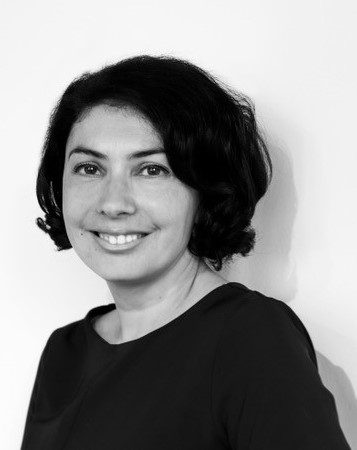Regulations for combating the financing of terrorism (CFT) is almost always grouped with anti-money laundering (AML), which explains the references to “AML/CFT”. In practice, this means that financial institutions are required to implement policies aimed at minimizing any exposure to terror finance just like they do to meet AML and other know-your-customer (KYC) requirements.
The author:

Irena Shoeg
Similarly, governmental bodies tasked with combating money laundering have taken on CFT, as well. Following the 9/11 attacks in New York, for example, the country’s Financial Action Task Force (FATF), which was originally founded to combat money laundering, saw its mandate expanded to also include terror financing.
Frequently, terror financing is referred to as “reverse money laundering”, a practice in which “clean” or “legitimate” money is acquired and then funneled to support terrorism, as opposed to taking illegitimate funds and “cleaning” it. However, while this may be a neatly packaged depiction of AML/CFT, it’s not entirely accurate, as terrorist organizations often use illegal – or “dirty” – sources of funds, as well.
Indeed, while there are certainly important overlaps between money laundering and terror finance, there are also significant differences that impacts how they need to be approached by compliance professionals.
What is Terror Financing?
Terror financing is often more complicated than money laundering, particularly given the challenges related to even defining the relevant terms.
In other words, while money laundering is fairly straight forward with general agreement as to what constitutes such activities, the heavy politicization of “terror” means that basic definitions of related terms can vary widely from country to country and organization to organization.
The FATF, for example, defines it as the “provision of money for terrorist acts, terrorists and/or terrorist organizations”. The World Bank, however, sees it as “the financial support, in any form, of terrorism or of those who encourage, plan, or engage in it”. The circular definition aside (i.e. frequently using the word you’re defining in the definition), there is no agreement on who is actually a terrorist. Thus, the challenge is not only which definition one accepts, but also which “terror list(s)” one abides by. Although most countries have their own lists, they are not necessarily accepted by the remainder of the global community. Indeed, the following lists are the most influential, as the more central the country or group of countries is to the world economy, the more relevant their list:
- US Department of State maintains the list of “Foreign Terror Organizations” (FTO) which applies only to foreign organizations.
- US Treasury Department’s Office of Foreign Assets Control (OFAC) has a list of special designated global terrorist (SDGT), which acts as a tool to block and freeze assets of individuals or organizations that engage in terror financing.
- UK maintains a list of “proscribed terrorist groups or organizations”
- EU Terrorist List, which freezes the assets of individuals, entities, or groups on this list
- UN Security Council (UNSC) Consolidated List, which includes those under sanctions by the UNSC, the only body of the UN with the power to make decisions that, per the charter, all other members are obligated to follow
How Terrorist Groups Raise Funds
One of the key differences between terror financing and money laundering is that the former tends to be motivated by ideology and/or politics. Depending on the nature of the organization at issue, and as you can see below, they can generate significant income from civilian donations who support their cause or governments who offer support, often in order to further their agendas. As a result, the source of funds can actually be “clean”. Entire organizations have been and continue to be established to drive funds to designated terror groups while presenting a benevolent front. In then same vein, groups with less support from the general population are more likely to earn money from illicit activities.
In other words, terror fund-raising means and methods vary widely based on the sophistication of the group, sympathy from civilian populations, support from state actors, as well as which and how many governments consider them to be a terror group. Likewise, smaller groups and individual actors can operate on more modest sums of money that can more easily bypass AML/CTF transaction monitoring systems. Larger groups by definition typically require higher amounts of funding to support larger and/or more sophisticated organizational structures and ongoing operational costs. These may require the use of more comprehensive, varied, and organized fund raising.
In this context, there are largely three different sources of funding for these groups:
1. State sponsorship – As noted above, this refers to support offered by a state government to designated terror groups. However, given the political considerations that surround designations, particularly those involving the government of another country, the US Department of State, for example, has designated only four countries as “State Sponsors of Terrorism”: Iran, Syria, North Korea, and Cuba. In 2020, Sudan was removed from this list.
By way of example of the sheer amount of money that can afforded to groups by state sponsors, it is estimated that Iran provides 6 billion USD to such organizations in Syria alone. This amount even led to some protests in Iran by segments of the population that felt it was an irresponsible use of the country’s limited funds.
2. Criminal activities — Including due to improved AML/CTF regulations and oversight, criminal activities have gradually become an important part of designated terror groups’ business structure. Generally, any crime that results in a profit can be used to finance terrorism, but the most common and the one that provides by far the largest source of funds is drug trafficking, leading to the coining of a new term called “narco-terrorism”. Some of the largest designated terror networks, including the Revolutionary Armed Forces of Colombia (FARC), Hezbollah, Al-Qaeda, the Kurdistan Workers’ Party (PKK), and the Taliban are heavily involved in the drug trade. Indeed, the latter’s estimated profit from drug trafficking is between USD 70 to 400 million per year.
Additional criminal activities commonly used by terrorist organizations include illicit trade in valuable commodities, ranging from oil to ivory to charcoal to antiquities, extortion, and abduction for ransom. Between 1996 and 2012, for instance, FARC reportedly earned more than USD 1.1 billion through ransom payments, making it one of its principal sources of revenue.
3. Legal funding – As discussed above, such funding can be derived from “clean” sources , making it more difficult to detect. This could mean donations from civilians with fully legitimate incomes or legal businesses run by terror groups . To this end, such organizations have been known to operate businesses from car dealerships to gas stations to pharmacies. In 2020, for example, “Shahed Pharm”, a chain of pharmacies in Lebanon was designated by OFAC for being part of Hezbollah’s support network.
Furthermore, some of the larger terror groups have or continue to hold and administer territory, collecting tax from the average civilian and using this to fund their operations, even if some of those operations may be providing local services. Examples of this include FARC, the Houthis in Yemen, and the Taliban.
Finally, and also as discussed above, one of the most substantial sources of legitimately earned funds that find their way into the hands of terror groups are charitable and non-profit organizations (the latter referred to as NPOs). The money at issue can, at times, be diverted without approval or, in other cases, the NPOs themselves were established by terror organizations or those with close ties to them for the sake of raising funds and often unbeknownst to those donating. Such abuse of charities and NPOs for this reason is often facilitated by their sometimes opaque nature and the challenges in conducting due diligence on those who are on the ground working to fund raise.
What does this mean for compliance professionals?
Given the above, its easy to see why identifying terror finance risk can be quite difficult. First and foremost, it’s complicated to even define terrorists and terror organizations, but even harder to identify revenue that is generated from “clean” sources. If a client or prospect is on an official list, the risk is clear, but rarely is it so simple and understanding terror finance risk requires a deep dive into his/her background and network, along with an understanding of how such organizations work and operate.
For this reason, understanding an individual’s elements that are important to research business and family ties, as well as other connections is necessary for identifying any exposure they may have to terror financing. In particular, charitable and other organizational memberships are key, especially those of an ideological nature. The individual’s jurisdiction of activity is also important to assess, as high profile individuals in countries with powerful and extensive designated terror organizations, such as Lebanon, Iran, and Syria, can often connected to these networks even if they do not explicitly support those groups or their belief systems. And lastly, but just as importantly, understanding the individual’s media profile is essential: investigative journalism and comments from the subject could link them to different groups or ideologies.
Indeed, order to truly mitigate any exposure to terror financing, it is imperative to conduct enhanced due diligence on the subject of investigation. Rather than relying on databases and other insufficient “tick-the-box” that can put a company at risk by missing possible links to designated individuals or groups — or block business by mistakenly identifying risk that may be misplaced — enhanced due diligence means taking a deep dive into the subject’s entire life and network, from business associates to charitable organizations they support to family members, friendships, court cases in which they may be involved, media profile, and more.
Did you miss our terror financing webinar? You can view it here.
Do you want to receive information about upcoming webinars and new analysis? Click here to sign up for our mailing list.


